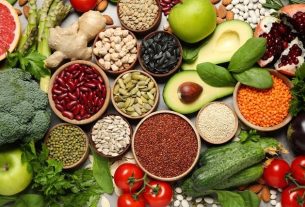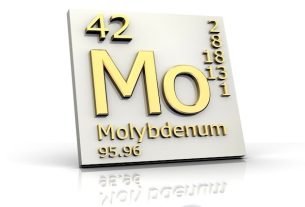Glycine is an amino acid that has antioxidant and immunomodulatory properties, helping to fight free radicals, strengthening the immune system and preventing the onset of cardiovascular diseases. Furthermore, glycine stimulates muscle mass gain and ensures skin firmness and elasticity.
This amino acid is produced in the body through the intake of some foods, especially those rich in protein of animal origin, such as eggs, fish, meat and dairy products, and in some vegetables, such as legumes and nuts. Discover other foods rich in animal and vegetable protein.
Glycine can also be found in the form of supplements, in capsules or powder, and is sold in health food stores or pharmacies. However, excessive glycine intake can cause some symptoms. Therefore, it is recommended that glycine supplementation be carried out under the guidance of a doctor or nutritionist.

Main benefits
The main health benefits of glycine include:
1. Help prevent diabetes
Glycine is an amino acid with antioxidant properties, which helps protect pancreas cells and balances insulin hormone levels, preventing insulin resistance and diabetes.
2. Maintain skin health
As it is the main amino acid for the production of collagen, a protein responsible for ensuring the firmness and elasticity of the skin, glycine helps maintain skin health.
Furthermore, glycine is an important antioxidant that fights excess free radicals in the body, preventing wrinkles and sagging.
3. Prevents cardiovascular diseases
By having an antioxidant effect on the body, glycine helps preserve the health of the arteries and prevent the formation of fatty plaques, preventing diseases such as atherosclerosis, heart attack and high blood pressure.
4. Help with muscle mass gain
Glycine is an amino acid that participates in muscle production, stimulating muscle mass gain.
Furthermore, glycine participates in the production of creatine, an amino acid that increases energy and strength during physical exercise.
5. Strengthens the immune system
Because it has antioxidant and immunomodulatory properties, glycine fights free radicals and strengthens the body’s defense cells, helping to prevent some diseases, such as flu and colds.
6. May help combat insomnia
Glycine has calming properties on the central nervous system, improving sleep quality at night. However, when consumed throughout the day, glycine does not cause sleepiness.
List of foods rich in glycine
The main foods rich in glycine of animal origin are:
- Eggs, such as quail, chicken or duck;
- Fish, such as salmon, sardines, trout and tilapia;
- Red meat, such as beef, lamb and pork;
- Aves, such as chicken, turkey, quail or duck;
- Dairy, such as cheese, yogurt, milk and cream.
Furthermore, some foods of plant origin, such as beans, chickpeas, soybeans, Brazil nuts, cashews and almonds, have good amounts of glycine and, therefore, are great options to include in your diet.
The body normally produces glycine in adequate quantities, and it is not necessary to consume foods rich in the amino acid. However, in cases of deficiency caused by low protein intake, glycine supplementation may be recommended.
Recommended quantity
The amount and time of use of glycine supplementation varies according to the current state of health and individual goals, and it is generally recommended to take 3 to 5 grams of the supplement per day, divided into 2 to 4 times per day, along with meals.
Side effects
Supplementing with high doses of glycine may cause some effects, such as abdominal pain or loose stools in some people. Therefore, it is advisable that the use of a glycine supplement is only done under the guidance of a doctor or nutritionist.
Bibliography
- MCCARTY, F, Mark et al. Dietary Glycine Is Rate-Limiting for Glutathione Synthesis and May Have Broad Potential for Health Protection. Ochsner Journal. Volume 18. 1st edition; 81–87, 2018
- RAZAK, A, Meerza et al. Multifarious Beneficial Effect of Nonessential Amino Acid, Glycine: A Review. Oxidative Medicine and Cellular Longevity . Vol.2017. 1-8, 2017
- YAN-DO, Richard et al. A Glycine-Insulin Autocrine Feedback Loop Enhances Insulin Secretion From Human β-Cells and Is Impaired in Type 2 Diabetes. Diabetes. Vol.65. 8.ed; 2311-2321, 2016
- KAWAI, Nobuhiro et al. The Sleep-Promoting and Hypothermic Effects of Glycine are Mediated by NMDA Receptors in the Suprachiasmatic Nucleus. Neuropsychopharmacology. Vol.40. 6.ed; 1405–1416, 2015
- ANDANY, M Adeva et al. Insulin resistance and glycine metabolism in humans. Amino Acids. Vol.50. 1.ed; 11-27, 2018

Sign up for our newsletter and stay up to date with exclusive news
that can transform your routine!
Warning: Undefined array key "title" in /home/storelat/public_html/wp-content/plugins/link-whisper-premium/templates/frontend/related-posts.php on line 12
Warning: Undefined array key "title_tag" in /home/storelat/public_html/wp-content/plugins/link-whisper-premium/templates/frontend/related-posts.php on line 13




